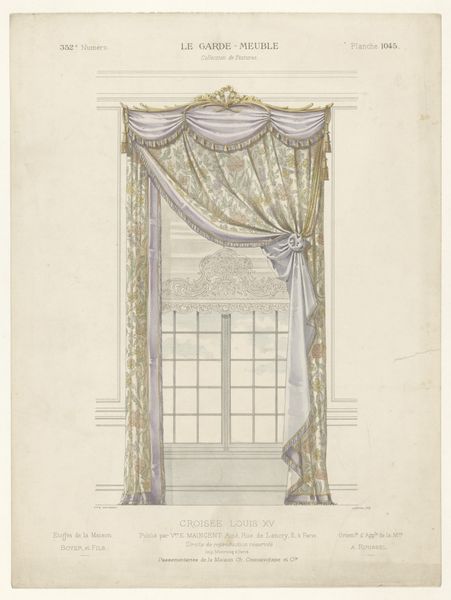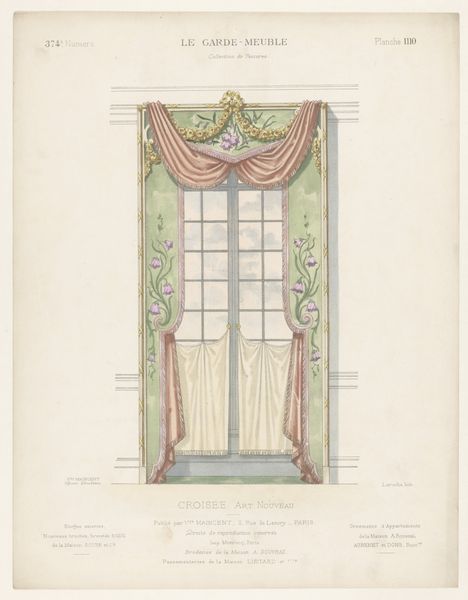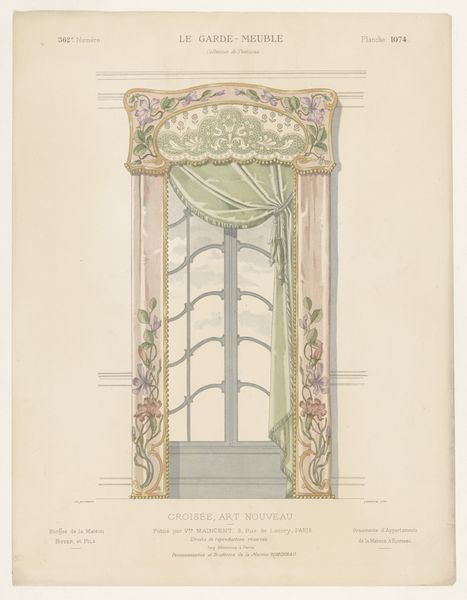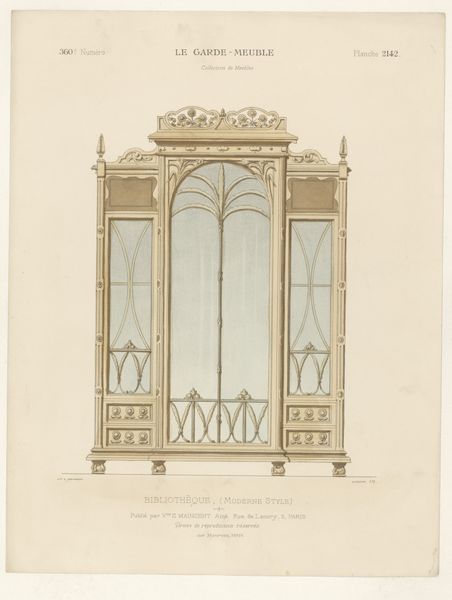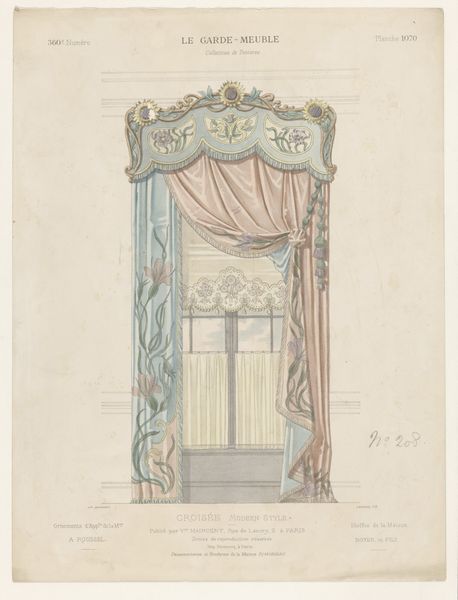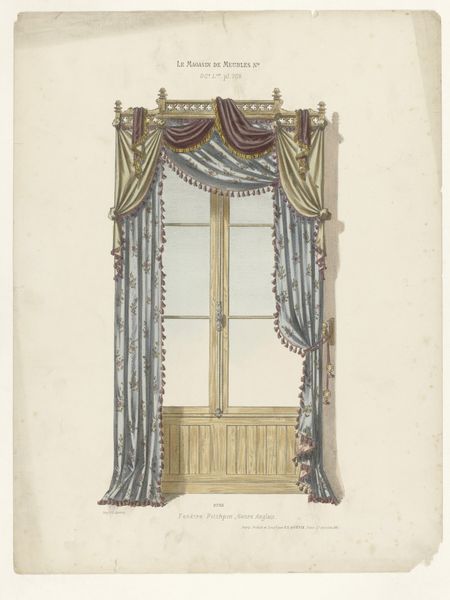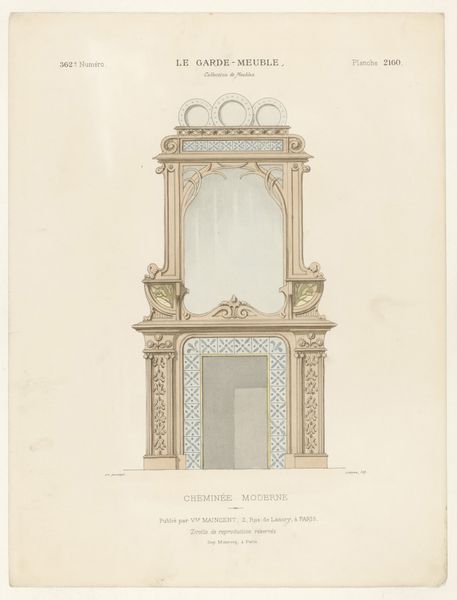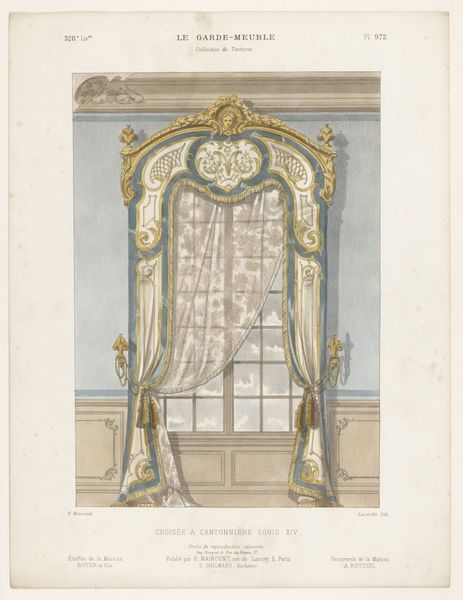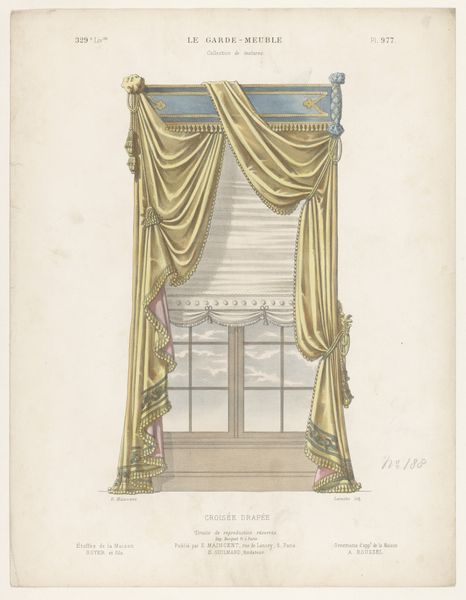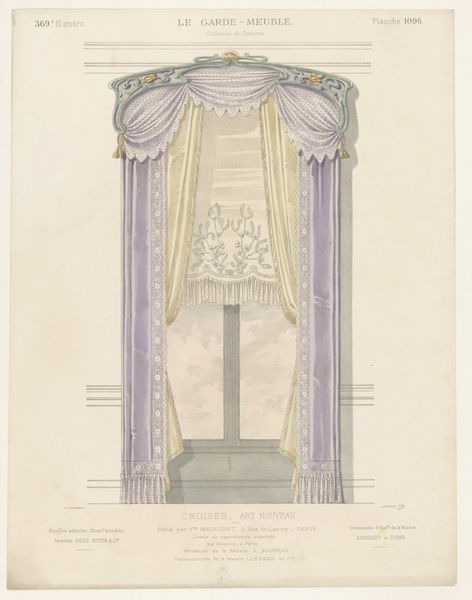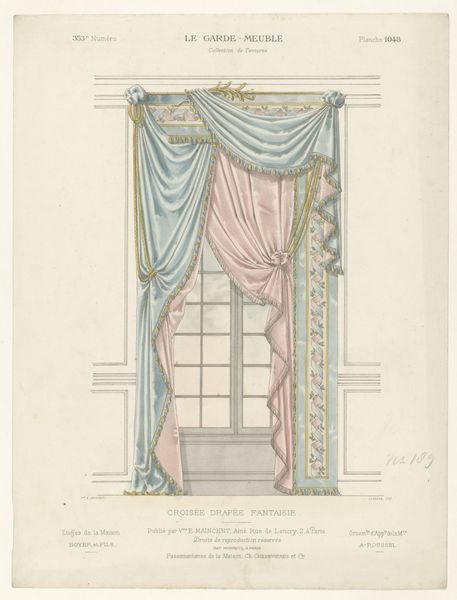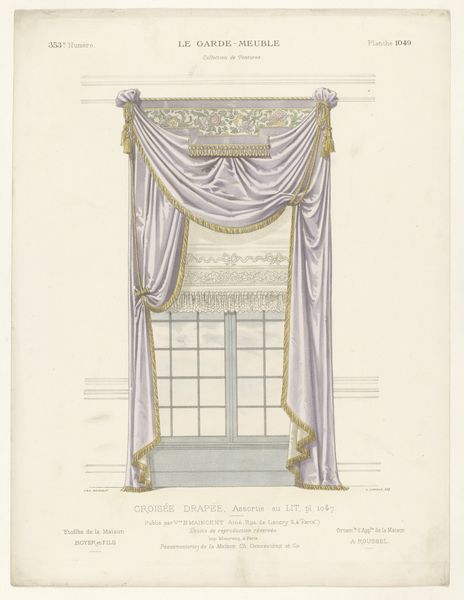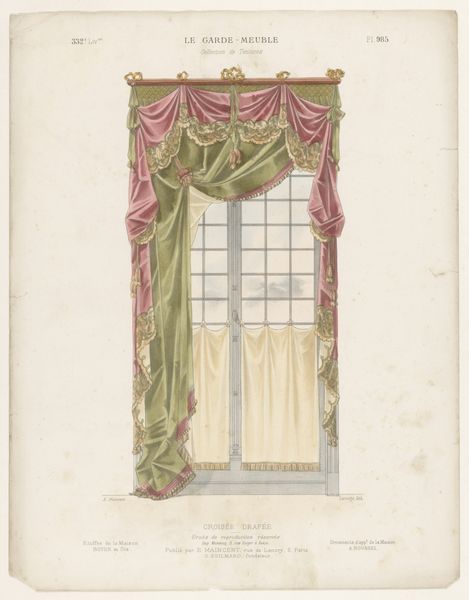
Dimensions: height 359 mm, width 273 mm
Copyright: Rijks Museum: Open Domain
Curator: Here we have "Venster met gordijnen," a drawing by Léon Laroche, created sometime between 1895 and 1910. Editor: It evokes such a feeling of faded grandeur, doesn't it? The muted colors, the stylized floral patterns… Curator: Absolutely. Let's delve into the compositional elements. Notice the almost mathematical precision of the window panes, contrasting with the more organic curves of the draping curtain. The window, with its rigid geometry, symbolizes order and reason—cornerstones of Neoclassical thought, despite its later creation. Editor: While you're drawn to the forms, I'm immediately focused on how it was likely made. The drawing’s precision suggests preparatory design work, perhaps intended for fabric or wallpaper production. These patterns weren't simply aesthetic; they were meant to be reproduced, distributed, and consumed, linking the artist to a whole network of makers and vendors. Curator: That's a valid point. But let's consider the symbolism inherent in the artist's choices. The decorative arts style incorporates idealized roses and what seems to be honeysuckle—flowers frequently used to convey themes of beauty, fleeting love, and the cycle of life. The careful integration of these motifs into the architectural form speaks to a broader engagement with symbolic languages. Editor: I'd argue those roses speak less to Neoclassical symbolism, and more to a striving towards luxury. These motifs, rendered in muted colors on mass-produced items, brought a sense of upper-class elegance into more common homes. The means of their production and distribution are key to their significance. We also can't discount that this drawing is on paper, not canvas: the ephemeral, potentially disposable nature is central. Curator: An astute observation, even if I find your materialistic interpretations a bit reductive at times! However, these contrasting frameworks enhance our viewing of this image. We can perceive the structure, the design. Editor: And consider the process, the networks—its consumption, to fully understand what we're seeing here. It helps show its original context.
Comments
No comments
Be the first to comment and join the conversation on the ultimate creative platform.
